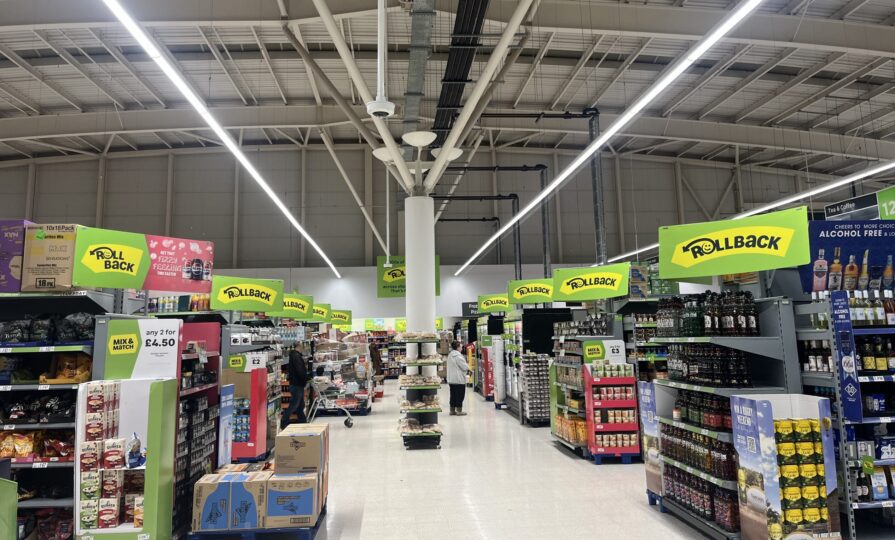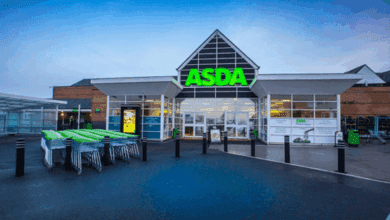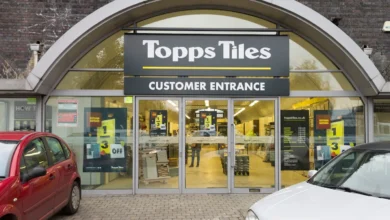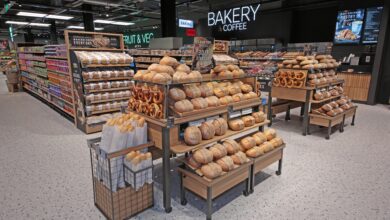The potential ripple effect of Asda’s Rollback return
Asda has reintroduced its Rollback promotion, offering an average reduction of 25% across 4,000 products. This aggressive pricing move has raised concerns among other major supermarkets, as shares in Tesco, Sainsbury’s and Marks and Spencer have collectively fallen by nearly £4bn. Claire Wallis, consumer goods and retail director at BearingPoint, discusses the potential rise of price wars and the impact on profit margins

Register to get 1 free article
Reveal the article below by registering for our email newsletter.
Want unlimited access? View Plans
Already have an account? Sign in
Asda has brought back its “iconic” Rollback scheme, reducing prices on more than 4,000 products in stores and online. As a result, more than £4bn has been wiped off the value of Tesco, Sainsbury’s and Marks and Spencer stock amid fears that rival Asda will step up the grocery price war. Talking about the significance of the rollback promotion and the influence it will have on its competitors, Claire Wallis, consumer goods and retail director at BearingPoint states: “Asda needed to do something,” given the current market climate, Asda had little choice but to take action.
Wallis, who has worked for retailers such as Tesco, Boots, and B&Q in various roles such as marketing, property cost management, and most recently, spearheading promotions optimisation at Tesco, notes that the retailer had lost a significant number of value shoppers, those most sensitive to price, to other players in the market. “By making this move, they’re trying to win back those customers, which ultimately helps them regain market share.”
She points out that Asda’s decision to potentially spark a price war signals the beginning of a new phase in retail competition, reminiscent of the 2014-2015 price battles. “It’s a significant move,” she explains, though she cautions that the market remains unpredictable. While the reintroduction of aggressive pricing could attract some customers back, she warns that “shopper behaviour is changing,” particularly as loyalty programmes become more influential.
She adds that today’s retailers are focusing on “lifetime loyalty,” which has proven more valuable than quick, price-led transactions. “It’s about sustainable commitment,” Wallis says, emphasising that promotions and price reductions alone don’t foster long-term customer loyalty. This shift towards loyalty over short-term gains could impact Asda’s strategy.
Despite the potential for a price war, Wallis also expresses concern over the financial toll it could take on Asda. “The price tag for Asda will be substantial,” she notes, highlighting the company’s significant investments in technology in recent years. She also questions how Asda will balance these investments while facing ongoing economic pressures, such as the National Living Wage and National Insurance hikes. With these challenges, Wallis suggests that “the cost of triggering a price war could be steep.”
Regarding Asda’s competitors, Wallis says: “Sainsbury’s has always been more cautious, waiting to see what happens.” Similarly, she believes that Tesco might hold its ground, relying on its loyalty programmes like Clubcard Prices to retain customers.
She also suggests that while some value shoppers may return to Asda in the short term, this won’t necessarily lead to lasting loyalty. “The value shopper may well switch back for the short-term gain, but ultimately, the larger question is whether they’ll stay loyal in the long term.”
Additionally, Wallis also states that it’s too early to say how these price reductions could affect profit margins. “If we look back to the 2014-2015 price war, we can get some indication of the trends we might see and how market share will shift in the sector,” she says.
Despite the uncertainty, she believes that a price war is likely, which will inevitably impact retailers’ bottom lines. “Retailers will have to make significant investments in price, and that’s going to put pressure on profitability,” Wallis explains.
She also notes that the retail industry as a whole is facing rising costs, particularly in relation to labour, which will further challenge profit margins. “All of the retail industry will be hit with significant labour costs due to an increase in National Insurance Contributions (NICs),” Wallis states, adding that retailers will need to optimise operations or look for cost-cutting measures to fund these price investments. As a result, she predicts that retailers will be forced to seek alternative sources of investment to support their price strategies.
One potential concern, according to Wallis, is that this focus on price could come at the expense of other critical investments, such as sustainability initiatives. “There’s a risk that the money for these price investments will come at the cost of long-term goals,” she warns. Wallis highlights how some retailers have already relaxed their sustainability and Net Zero targets, and she fears that other key areas, like loyalty programmes, could also suffer. “It’s going to have to come from somewhere,” she concludes, noting that the shift in investment priorities could impact the long-term health of the business.
Aggressive price cuts, Wallis argues, are likely to place additional strain on suppliers—an outcome she sees as almost unavoidable in such a fiercely competitive sector. The grocery retail market has always operated with thin margins, and the consumer goods companies that supply supermarkets have had to adapt repeatedly over the years.
A clear example of this tension emerged in the post-Covid dispute between Heinz and Tesco, where proposed price hikes led to a highly publicised standoff, highlighting the fragile balance between cost pressures and supplier relationships.
A similar situation could arise as retailers push for lower prices, which could lead to a shift in investment strategies, according to Wallis. “It may be a balance between investing more in price rather than promotions,” she explains. As such we could see grocers divert funds away from traditional trading deals and in-shelf promotions, focusing more on securing low prices on essential products that matter most to customers.
“This could bring additional volume,” she speculates, highlighting the ongoing struggle to balance value and volume in the market. However, she admits uncertainty about whether this will truly help revive volume sales. This also means that the pressure on suppliers, especially smaller ones, will be significant in the near future. “There will definitely be a high level of impact on supplier conversations and relationships,” Wallis notes, warning that smaller suppliers might feel the strain as they try to meet the demands of large grocery retailers.
“You may see a lot of movement in the marketplace as suppliers grapple with how to meet the levels required by these big players.
“I think the drop in share price will probably surprise some people, especially given Tesco’s strong performance and market share growth over the last couple of years. I wouldn’t have anticipated such a significant swing in the share price.”
Wallis believes the recent decline in share prices may signal growing investor anxiety around long-term profitability. With the threat of a potential price war, she notes, comes instability in profit margins. Lower prices, while attractive to consumers, must be funded from within the business—and that uncertainty, she suggests, is likely contributing to market unease.
This concern ties into broader changes within the retail landscape. Consumer behaviour has evolved significantly since 2014, she observes, and retailers are now juggling a far more complex set of expectations. One key area is sustainability, where long-term investment is critical—but increasingly uncertain. Investors may be questioning whether grocery retailers can still afford such commitments, especially if shrinking margins threaten their returns.
For Wallis, this shift prompts a wider discussion about what creates lasting value. While price remains important, she stresses that it’s just one element of a broader value proposition. Drawing on her experience at Tesco—where strategies like Clubcard prices and Aldi Price Match played a central role—she underscores that true profitability lies in securing “lifetime loyalty.” Winning the big weekly shop and the quick top-up trip, she argues, is what ultimately delivers sustainable growth.
Customer experience also plays a vital role in that equation. Retailers have long invested in service and store engagement, but speed and convenience have now taken center stage. The rise of rapid delivery services like “Whoosh” reflects shifting consumer priorities, where immediacy is fast becoming a key driver of loyalty.
Looking ahead, Wallis expects to see a more strategic balancing act in how investment is allocated. Front-end enhancements—like improving the customer journey—will need to be matched by back-end innovations in automation and technology. These operational efficiencies, she suggests, could help retailers absorb the cost of lower prices while still funding improvements in other areas that matter to customers.
Ultimately, Asda’s move may spark immediate reactions, but the longer-term question remains: will the market continue down the path of aggressive price competition, or shift focus toward building deeper customer relationships? In an environment shaped by evolving consumer habits and tightening margins, Wallis warns that the sustainability of these strategies is far from guaranteed.







